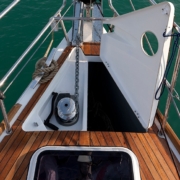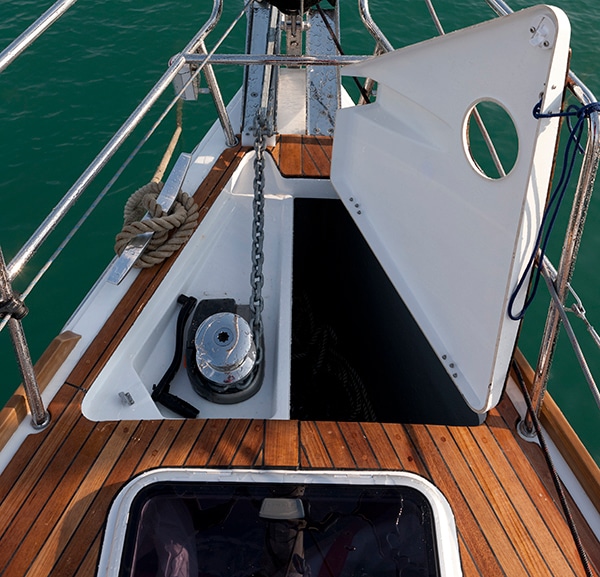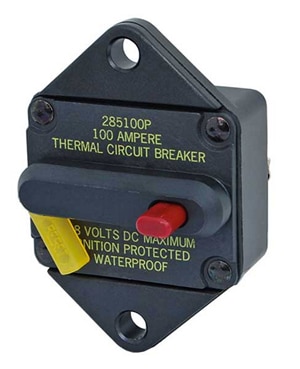Electric Windlass

Electric Windlass
An electric windlass is a powerful electric winch that greatly helps in the lowering and raising the anchor. Since they are powerful, they use a substantial amount of DC power that can rapidly drain your battery. You are therefore advised to run the engines when using the windlass. Some boats require that the engine is running.
The size and strength of electric windlass required depends upon vessel length, displacement, and type of rode. Most windlasses will accommodate both chain and line.
Usually, there is an electric breaker/reset switch for the windlass. The breaker prevents too much current from overheating the wires to the windlass. If this “pops” you had either too much tension on the rode or you held the button on too long. You’ll need to hit the reset switch, which is usually in an inconvenient location. For some unknown reason, manufacturers put the windlass reset switch in the most obscure locations. On some boats, it’s next to the battery switch. When skippering an unfamiliar boat, you should always ask about the location of the windlass reset switch. Manufacturers, if you are reading this book, for goodness sake, please put the windlass reset switch in a logical location. Why do you hide it? Is it some sort of a sick joke amongst all of you?
In the image below, the yellow lever is in the tripped-off position. It needs to be rotated up under the black bar to be reset to the on position.
Windlass Reset
The electric windlass is not designed to pull the boat toward the anchor. The way to pull in the anchor using a windlass is to use what is called the catenary effect. This method uses the weight of the chain rising in a curve off the bottom. When the chain is pulled in a little, the new curve formed by the chain weight pulls the boat forward. In this manner then, when pulling in the anchor, you should first hold the windlass “up” button down for only 5 seconds or so. Then let off and watch the boat move forward. Then use another 5-second burst and repeat. If you don’t do this you could overload your windlass and reduce its working life. At the very least you will blow the windlass breaker.
Watch out also for the chain stacking on top of itself in the anchor locker. It can quickly back itself up into the windlass and cause a nasty jam, which is difficult, at best, to get clear. Train your crew to watch for this.
When letting out, most windlasses allow you to loosen the winch spindle a little so that the rode can free wheel out. On some, you simply place the winch handle at the top of the center of the winch and turn counterclockwise to loosen.
Finally, you will find many windlass handheld controls on which the connecting cord has been repaired with black electrical tape. This happened because an amateur was not watching everything as the anchor rode came up and allowed the cord to be bound up with the chain and sucked into the winch. But you’re better than that—right?









